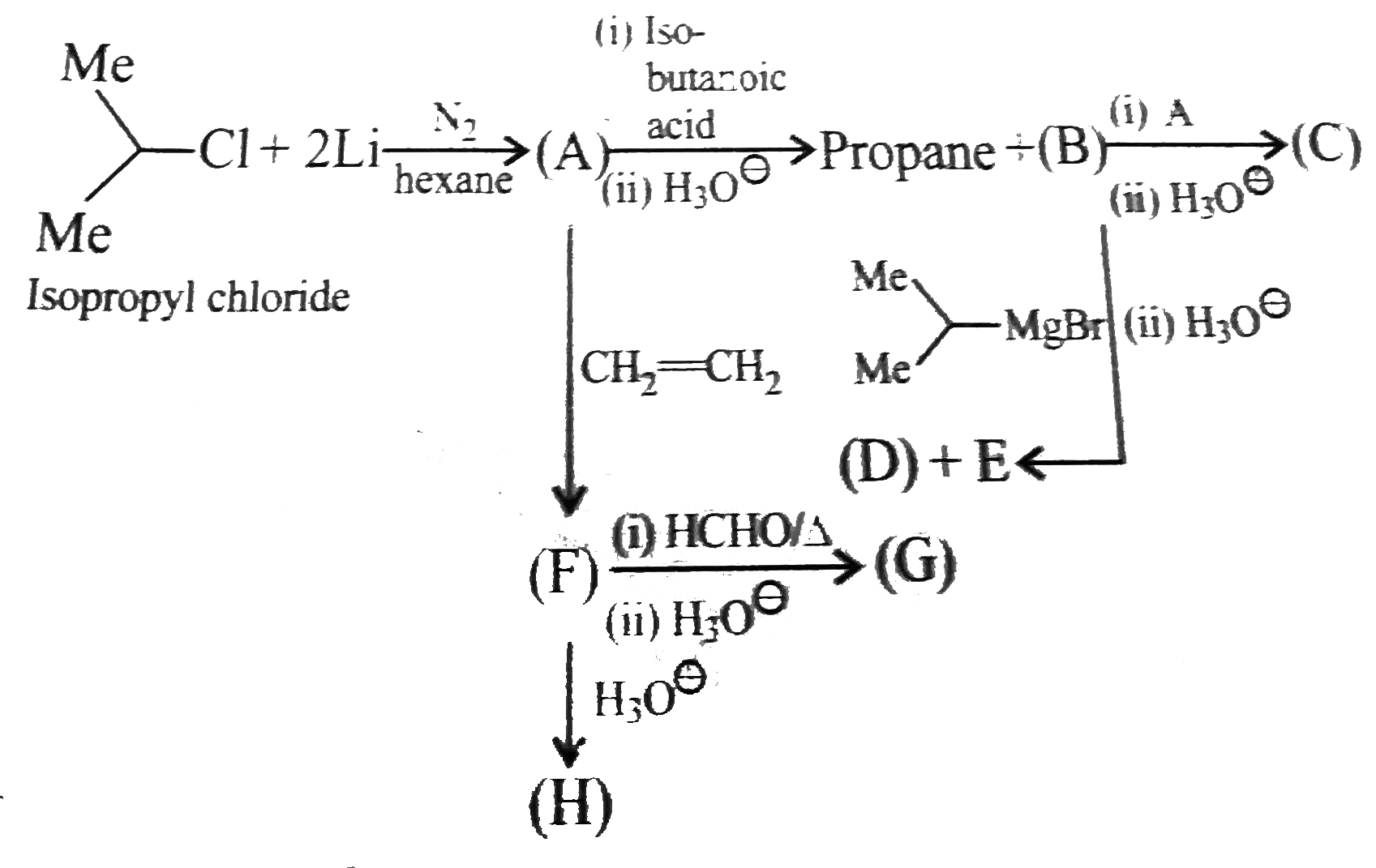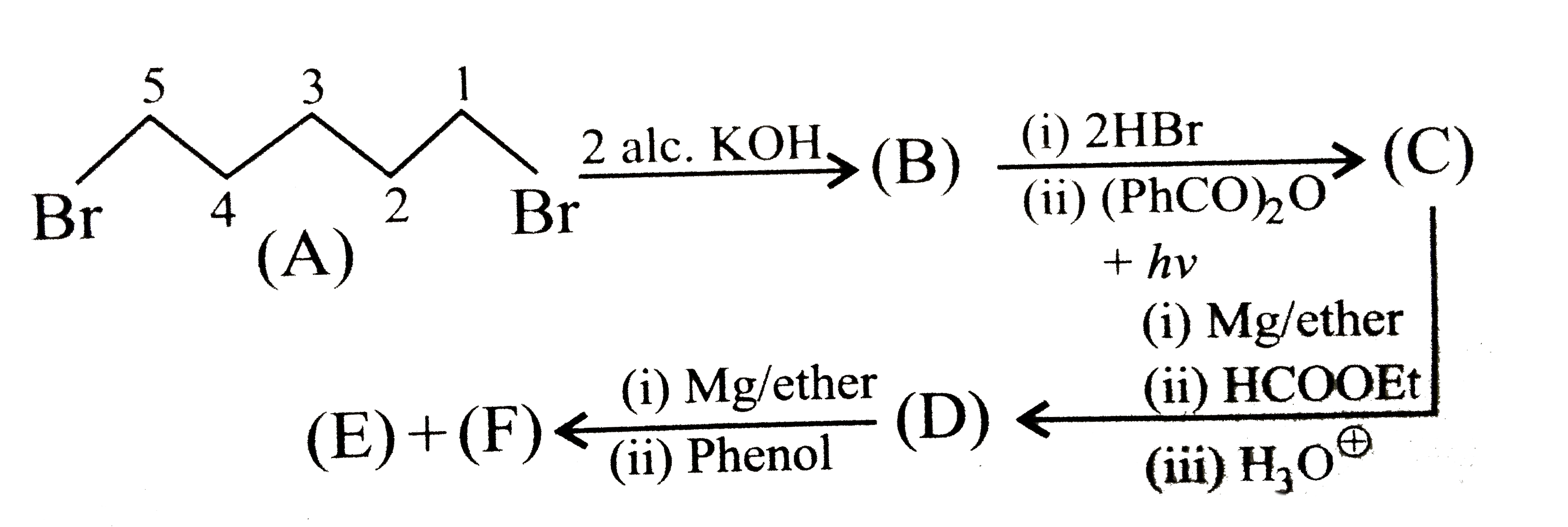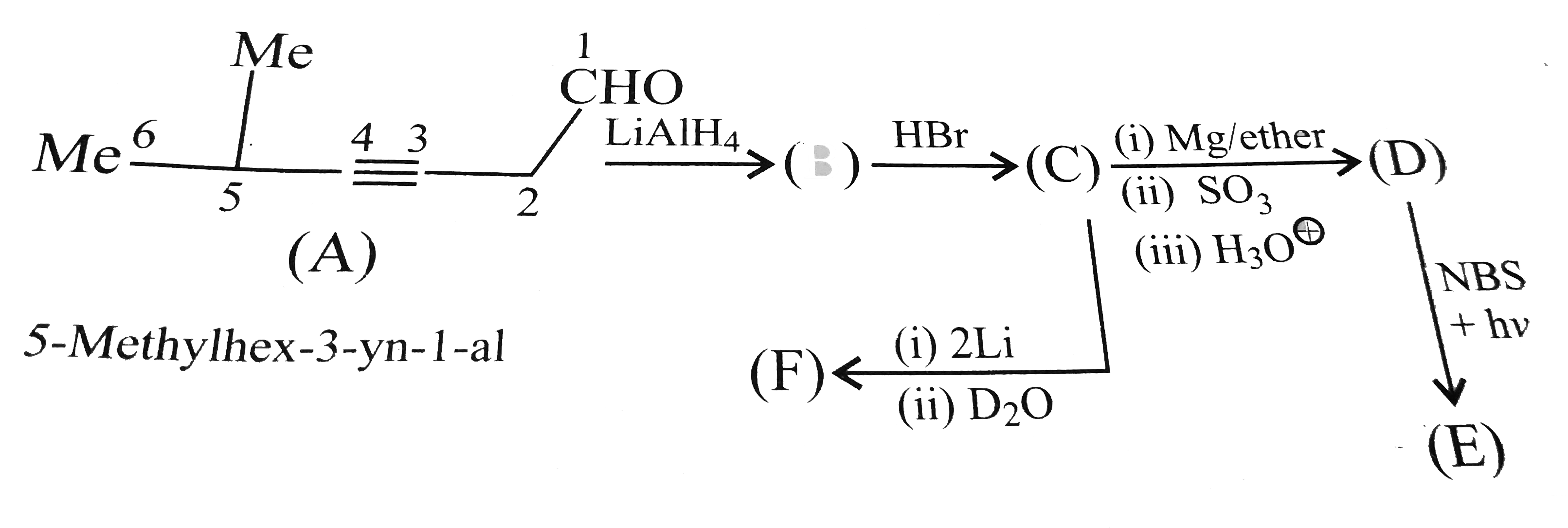
The product (B) is:
A

B

C

D
All
Video Solution
Text Solution
The correct Answer is:A
The cleavage of (C−OH) bond is feasible rather than cleavage of (Ar−OH) bond because of resonance stabilisation in ArOH.
|
Topper's Solved these Questions
- ALCOHOL,PHENOL AND ETHERSBOOK - CENGAGE CHEMISTRY ENGLISHCHAPTER - ALCOHOL,PHENOL AND ETHERSEXERCISE - Exercises Assertion-Reasoning
5 Videos
- ALCOHOL,PHENOL AND ETHERSBOOK - CENGAGE CHEMISTRY ENGLISHCHAPTER - ALCOHOL,PHENOL AND ETHERSEXERCISE - Archives Single Correct
14 Videos
- ALCOHOL,PHENOL AND ETHERSBOOK - CENGAGE CHEMISTRY ENGLISHCHAPTER - ALCOHOL,PHENOL AND ETHERSEXERCISE - Exercises Multiple Correct
24 Videos
- ALIPHATIC AND AROMATIC ALDEHYDES AND KETONESBOOK - CENGAGE CHEMISTRY ENGLISHCHAPTER - ALIPHATIC AND AROMATIC ALDEHYDES AND KETONESEXERCISE - Archives Subjective
26 Videos
Similar Questions
Knowledge Check
Consider the following sequence of reactions.

The end product (B) is:A B
B C
C D
D

End product B is :A B
B C
C DPh−C≡CD
DPh−C≡CD

The structure of product (B) is :
View Solution
The structure of product (B) is :
View Solution
The structure of product (B) is :
View Solution
The structure of product (B) is :
View SolutionIn the following sequence of reactions, products A, B, C, D, and E are formed:

The structure of product (B) is:
View SolutionIn the following sequence of reactions, products (B) to (E) are formed:

Product (B) is:
View Solution

_S01_379_Q01.png)
 .
.